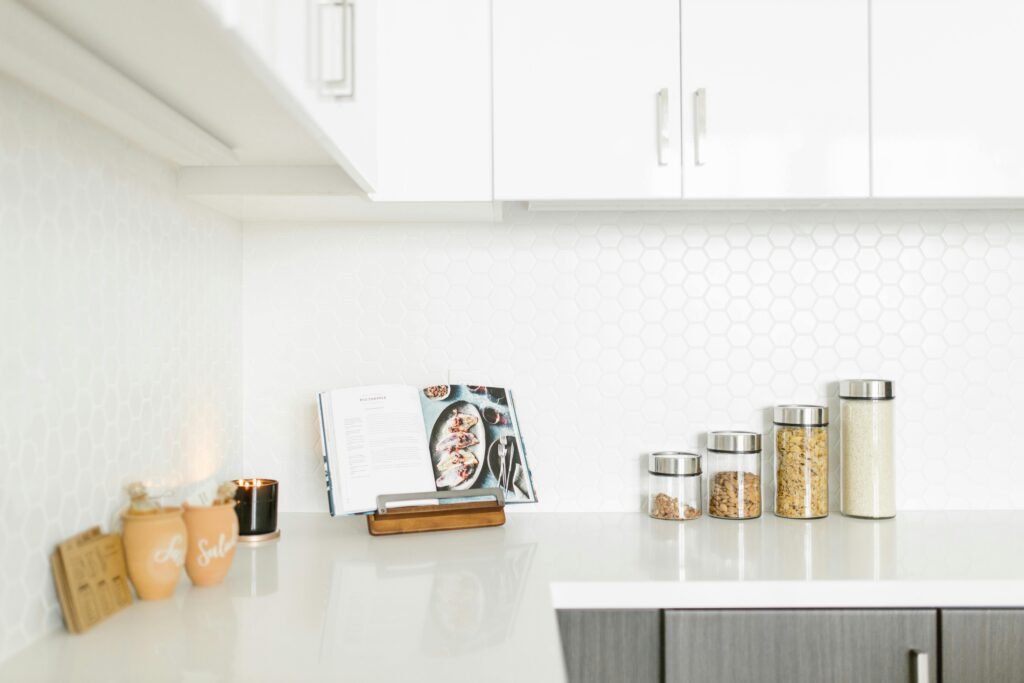A well-organized kitchen isn’t just about having a neat and tidy space — it’s about creating an environment that allows you to work efficiently, save time, and reduce stress. Whether you’re an experienced chef or a busy home cook, the layout and organization of your kitchen can significantly impact your cooking experience. If you’re tired of searching through cluttered drawers or struggling to find the right pot or pan, this ultimate guide to organizing your kitchen is here to help!
Why Kitchen Organization Matters
An organized kitchen makes everything easier. You’ll spend less time hunting for ingredients, tools, or cleaning supplies. Plus, an efficient kitchen reduces waste, helps you stay on top of meal prep, and encourages more frequent home cooking. The key is to design your kitchen in a way that aligns with your cooking habits, kitchen size, and storage needs.
Step 1: Declutter and Simplify
The first step to an organized kitchen is decluttering. It’s tempting to hold on to old kitchen gadgets, dishes, and utensils “just in case,” but if you’re not using them regularly, they’re taking up valuable space. Start by pulling everything out of your cabinets, drawers, and pantry.
Tips for Decluttering:
- Go through every drawer and cabinet: Get rid of broken, unused, or duplicate items.
- Consider donating items that you haven’t used in the past year.
- Be realistic: If you’re not using that fancy bread maker or ice cream machine, it might be time to let it go.
- Set a limit: If your cabinet is full of mismatched containers, keep only those that fit and are in good condition.
Step 2: Group Like Items Together
Once you’ve decluttered, it’s time to categorize your kitchen essentials. Grouping similar items together allows you to find what you need quickly and ensures that everything has its designated spot.
Tips on How to Group Your Kitchen Items:
- Cooking utensils and tools: Place all your spatulas, whisks, tongs, and ladles in one spot, either in a drawer organizer or a countertop container.
- Baking supplies: Keep baking tools, such as mixers, rolling pins, measuring cups, and baking pans, together in one area.
- Pantry staples: Group canned goods, spices, dry goods (like pasta and rice), and baking ingredients in clear containers for easy access.
- Cookware: Arrange pots, pans, and cooking sheets by frequency of use. Store the most used items in easily accessible places.
- Cutlery and knives: Keep knives in a knife block or magnetic strip for safety and quick access, while forks, spoons, and everyday knives can go in a drawer organizer.
Step 3: Maximize Cabinet and Drawer Space
A major challenge in kitchen organization is making the most of your available storage space. A kitchen with limited cabinet space can be tough to navigate, but with a little creativity, you can use the space you have much more efficiently.
Ideas for Maximizing Kitchen Storage:
- Adjust shelf heights: In cabinets with adjustable shelving, customize the shelf heights to accommodate different-sized items.
- Use drawer dividers: Install dividers to separate utensils, and consider using expandable organizers for cutlery.
- Install pull-out shelves: For deep cabinets, consider installing pull-out shelves or baskets. This helps you access items at the back without having to unload the entire shelf.
- Store pots and pans vertically: Invest in a pot rack, or use tension rods to organize lids in a drawer or cabinet.
- Hang utensils and tools: A wall-mounted pegboard or hooks on the inside of cabinet doors can store measuring spoons, potholders, and other frequently used tools.
Step 4: Optimize the Pantry
The pantry is often one of the most difficult areas to organize because it can easily become a jumble of half-empty cereal boxes, mismatched bags of chips, and forgotten condiments. Here’s how to create a pantry system that works for you:
Tips for Pantry Organization:
- Use clear containers: Store dry goods like flour, sugar, rice, and pasta in clear containers with labels. This not only makes it easy to see what you have but also keeps food fresh for longer.
- Group items by category: Organize your pantry with similar items next to each other, such as snacks, canned goods, grains, and spices.
- Implement a FIFO system: Arrange your items so that older products are in the front, encouraging you to use them before newer ones.
- Consider pantry door racks: Use the inside of the pantry door to store spices, canned goods, or other small items. This is a great way to save space!
Step 5: Streamline Your Countertops
A cluttered countertop can make cooking feel chaotic and stressful. To maintain a tidy and efficient workspace, reduce the number of items you keep on your counters.
Tips on How to Keep Countertops Clutter-Free:
- Limit countertop appliances: Store appliances like blenders, toasters, and mixers in cabinets when not in use. Keep only the essentials — such as a knife block and cutting board — on the counter.
- Create a prep station: Dedicate one area of your counter to food prep. Keep cutting boards, knives, and measuring cups within easy reach.
- Use trays or baskets: For items that need to stay on the counter, like fruit bowls or oils and spices, corral them into trays or baskets to prevent visual clutter.
Step 6: Label Everything
Labels are your best friend when it comes to keeping your kitchen organized. By labeling jars, containers, and even shelves, you can easily find and return items to their proper place. This system works for both pantry staples and cleaning supplies.
Tips for Labeling:
- Use clear, easy-to-read labels: Label jars and storage bins so everyone knows where to find things.
- Label spices: Spice racks or drawer inserts can be labeled by type (e.g., herbs, baking spices, savory spices) for easy access.
- Create a system: Have a label for expiration dates, storage locations, and types of food to help keep your kitchen organized and prevent food waste.
Step 7: Maintain Your Organization
Once your kitchen is organized, it’s important to maintain the system you’ve created. Regular upkeep will keep your kitchen running smoothly, even with a busy schedule.
Tips for Maintenance:
- Tidy up daily: Take 10 minutes each day to wipe down counters and put away items that are out of place.
- Revisit your kitchen quarterly: Every few months, review your kitchen organization to make sure it still works for your needs. Declutter and reorganize as necessary.
- Keep things in their place: Encourage everyone in your household to follow the same organization system.
An organized kitchen isn’t just about aesthetics; it’s about creating a functional space that makes your daily cooking experience more enjoyable. By decluttering, grouping items logically, maximizing your storage, and maintaining a system, you’ll be well on your way to a kitchen that works efficiently for you. So, roll up your sleeves, grab your favorite organizing tools, and get started — your new kitchen is just around the corner!

